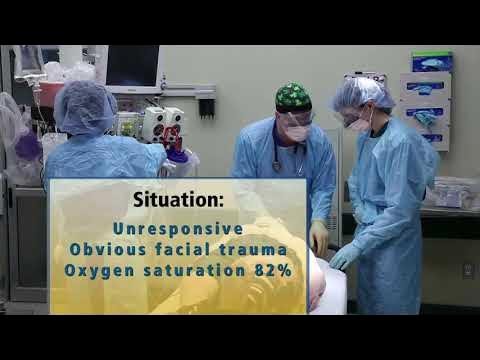Pemasangan Gips Pada Lengan. Vlog Dokter Mancing
Summary
TLDRIn this video, a medical professional discusses the treatment of a closed fracture in a 50-year-old male patient, explaining both conservative and surgical options. The doctor outlines the steps involved in fracture management, including repositioning the bone, using external fixation, and ensuring proper healing through monitoring and physiotherapy. Viewers will learn about the importance of early intervention, the role of external devices in maintaining bone alignment, and the rehabilitation process. The video offers practical insights into fracture care while highlighting the significance of patience and medical guidance in achieving full recovery.
Takeaways
- 😀 Fracture treatment begins with repositioning the bone to ensure it heals correctly.
- 😀 Fractures that do not penetrate the skin are referred to as 'closed fractures'.
- 😀 External fixation devices are often used to stabilize the bone during the healing process.
- 😀 The healing time for a fracture is typically around three weeks, after which external fixation can be removed.
- 😀 X-rays are crucial for monitoring the healing progress of a bone fracture.
- 😀 In some cases, especially for adults, surgery may be recommended to speed up the rehabilitation process.
- 😀 Physiotherapy plays an important role in helping the patient regain joint and muscle function after a fracture.
- 😀 Pediatric fractures generally heal faster than those in adults, with children often recovering in about three weeks.
- 😀 If a bone is slightly misaligned after a fracture, it may still heal well, but this requires careful monitoring.
- 😀 The goal of fracture treatment is to ensure proper bone alignment and minimize complications like rotation or shortening.
- 😀 Fractures with internal wounds or skin punctures (open fractures) can still be treated effectively with fixation devices if the wounds are properly managed.
Q & A
What is a closed fracture?
-A closed fracture is when the bone breaks but does not puncture the skin. The skin remains intact, unlike an open fracture where the bone may break through the skin.
What is the first step in treating a closed fracture?
-The first step is to properly align the broken bone. This is called 'reposisi,' or repositioning, to make sure the bones are correctly aligned for healing.
What does 'reposisi' mean in fracture treatment?
-'Reposisi' is the process of realigning the broken bone to its original position, ensuring it heals properly without complications like misalignment or uneven healing.
What are the two main treatment options for a closed fracture?
-The two main treatment options are conservative treatment, which involves using a cast or splint, and surgery, which may be required in some cases to fix the bone in place using devices like external fixators.
When is surgery typically recommended for closed fractures?
-Surgery is usually recommended for adults with fractures that require precise alignment, or when other conservative methods like casting are not sufficient. It helps speed up the recovery process.
How does external fixation help in fracture healing?
-External fixation involves applying an external device to stabilize the broken bone while it heals. This is often used when surgery is needed to ensure the bone remains in the correct position.
What role does rehabilitation play in fracture recovery?
-Rehabilitation, often in the form of physiotherapy, is essential for restoring strength and mobility after the bone has healed. Early rehabilitation helps prevent stiffness and ensures quicker recovery.
How long does it typically take for a fracture to heal?
-Fracture healing time can vary depending on factors like the age of the patient and the severity of the fracture. For most patients, healing begins to show after a few weeks, but complete recovery may take longer.
Why do children heal faster from fractures compared to adults?
-Children’s bones heal faster due to their higher cell regeneration rates and the fact that their bones are more flexible and have a greater capacity for healing compared to adults.
What should you do if you're unsure whether a fracture is healing properly?
-If you're unsure, it’s crucial to consult a doctor for an X-ray or follow-up appointment. The doctor can assess whether the bone is healing correctly and make adjustments to the treatment plan if needed.
Outlines

This section is available to paid users only. Please upgrade to access this part.
Upgrade NowMindmap

This section is available to paid users only. Please upgrade to access this part.
Upgrade NowKeywords

This section is available to paid users only. Please upgrade to access this part.
Upgrade NowHighlights

This section is available to paid users only. Please upgrade to access this part.
Upgrade NowTranscripts

This section is available to paid users only. Please upgrade to access this part.
Upgrade Now5.0 / 5 (0 votes)





